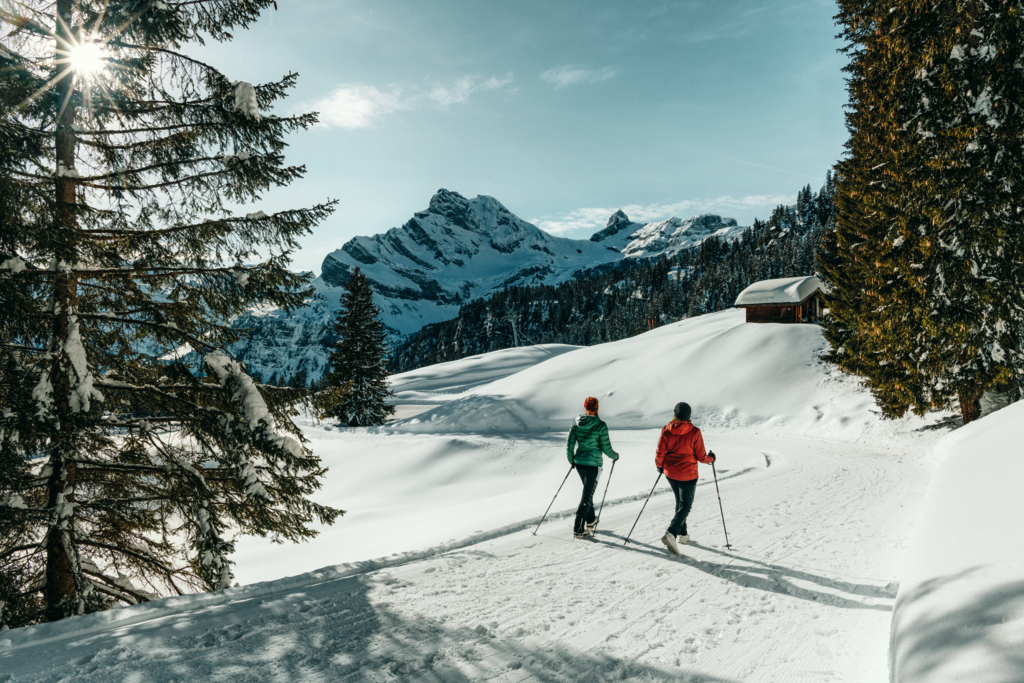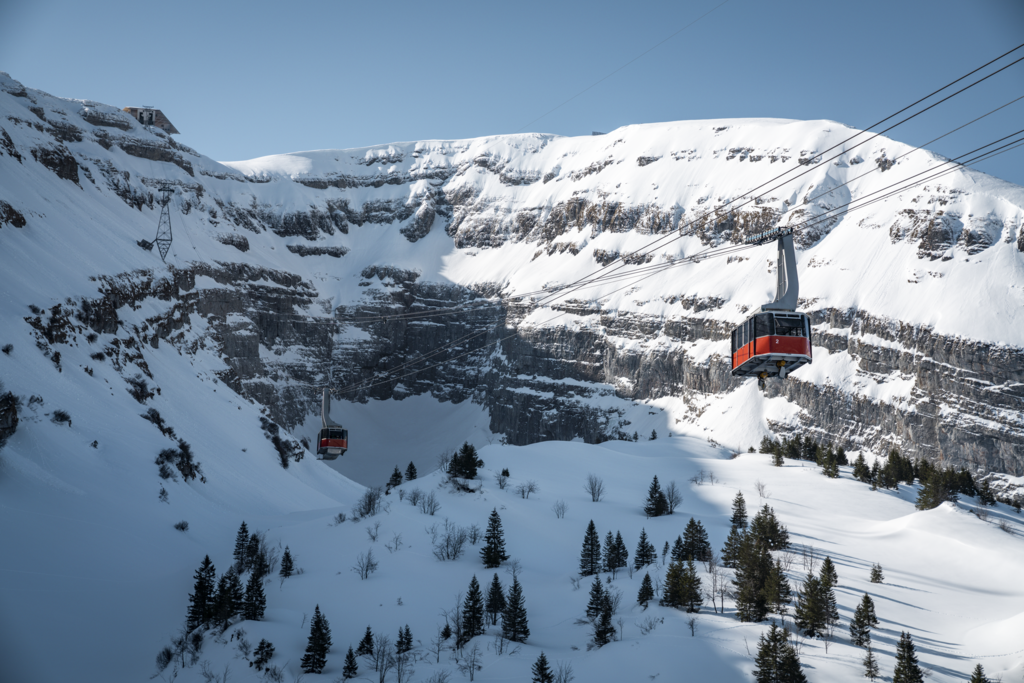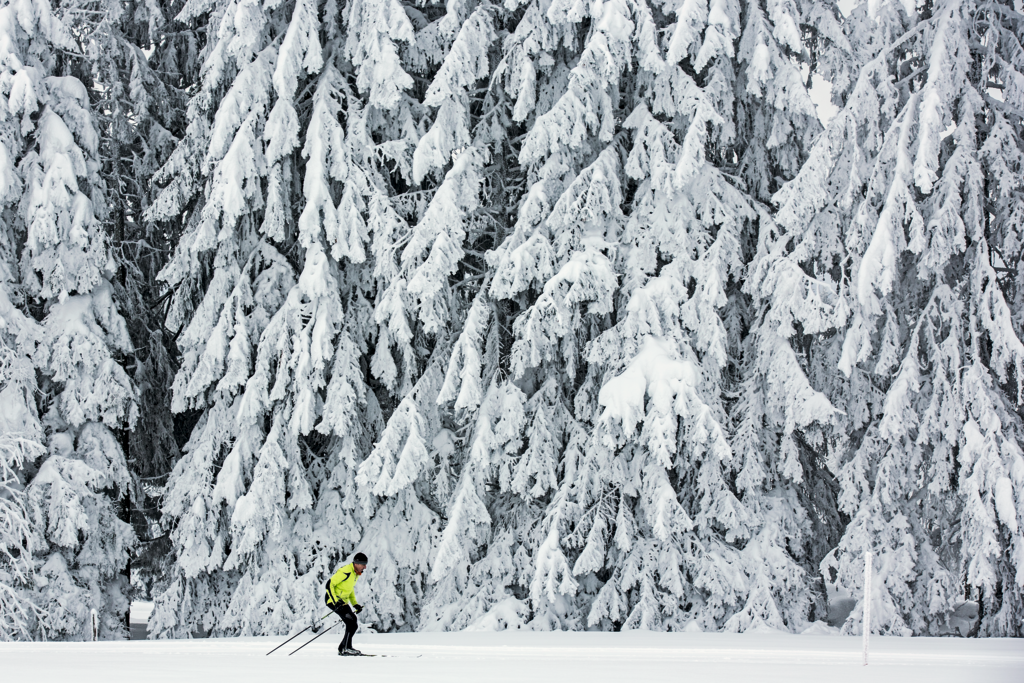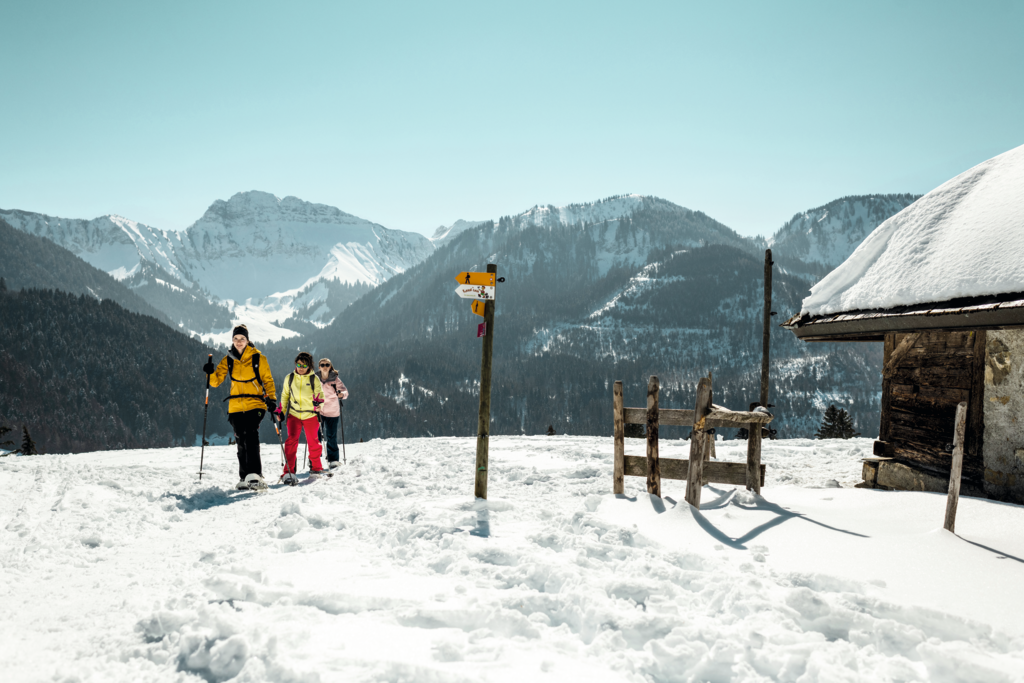Thu, Dec 8th 2022
As Switzerland seeks new ways to shore up energy amidst a European shortage, the question of what is considered fundamental to the country’s economy keeps popping up. How vital are Swiss ski resorts and all the energy they consume?

Switzerland’s tourism industry makes the bulk of its profits in the winter season (Credit: MySwitzerland).
The Swiss Federal Council recently published its proposed plan to handle electricity shortages this winter – a four phase plan that ranges from setting a maximum temperature for doing laundry to limiting opening hours of businesses and prohibiting cultural or sport events. Energy consumption related to Switzerland’s winter tourism sits squarely in the middle.
While the Swiss government is encouraging citizens to save as much energy as possible (even recommending people take joint showers), nearby ski resorts keep producing artificial snow, illuminating ski slopes at nights, and running gondolas. To an outsider, this may appear to be a luxurious waste of energy during a moment of crisis.
It’s true that ski lifts are big energy consumers and have been deemed harmful for the environment by about half of Swiss skiers surveyed by Manova, a market analysis firm. But the equation is a bit more complex. As put by Laurent Vanat, an industry expert, “while some people are saying you just need to switch off the lift so we will save energy others will say you should look a little bit further than the Boulevard Peripherique and think about the consequences this could have in the mountains.”

The large gondolas that connect tourists to car-free villages require a lot of energy (Credit: MySwitzerland).
The outlook for the 2022/23 winter
Mountain regions cover almost half of the Swiss territory and 34% of the local Swiss population skis. The winter tourism sector employs over 17,000 people and industry surveys estimate that just one Swiss franc spent on ski lifts transforms into six more Swiss francs spent in the region. This means that at the national level winter tourism accounts for about 1% of Switzerland’s GDP and in some regions up to 10%.
While a year ago Covid-related restrictions in neighboring countries and a domestic demand helped fabricate a strong rebound for winter tourism, this winter will be more challenging. An increase in energy prices has already been announced and staff shortages in the hospitality industry – following the pandemic and possibly due to difficult work conditions – puts more pressure on prices. In fact, several resorts have already announced significant increases.
This occurs in a context of strong inflation in Europe that has potential skiers reconsidering their annual ski vacation with lower purchasing power. Additionally, the Swiss franc has appreciated and ski resorts in other countries are no longer closed. Some, like Morzine and Avoriaz in France, are even determined to avoid any increases in ski pass prices. All this threatens to dwindle the number of foreign tourists in Switzerland this season (read more here).
However, domestic skiers have always played an important role. During the Covid breakout in 2020/21 season they accounted for 82.5% of skier days. Last season, with neighboring countries still keeping their slopes closed, they contributed 68.3% skier days, according to RMS, the Swiss ski lift association. With inflation in Switzerland much lower than in the rest of Europe, they could save this season.

Swiss ski resorts make most of their money off of Swiss residents who frequent the slopes (Credit: MySwitzerland).
Less panic, more clarity
During late summer, the Swiss Federal Office for National Economic Supply was considering imposing targeted measures on skiing areas. The industry would be targeted at only the second level of restrictions of an energy savings plan, with potential banning snow production and stopping ski lift operations altogether.
The uncertainty has likely brought back memories from the quickly shifting Covid-related regulations in the past two years.
“It looked like they just wanted to switch off the lifts, but this is completely stupid because to save 0.3% of electricity in Switzerland, I doubt it’s relevant to cut GDP in some regions by 10%,” says Vanat, adding that the main concern for the industry is the lack of clarity from the government.
Indeed, the electricity consumption of lifts and snow production is not as outrageous as one may think. RMS reports an annual consumption of 210 GWh, or 0.34% of total annual consumption in Switzerland. Considering the total number of skier days recorded (25.4 million for the 2021/22 season), this amounts to about 8 Kwh per ski day, the equivalent of driving 35 km in a car.
Ole Rauch is director of GoSnow, an association promoting snow sports in schools in Switzerland. He speaks of an initial panic during the late summer when they thought they would have to cancel all their camps but explains that the outlook has changed.
“Our partners from the rail rope association and the lifts and the ski stations are all pretty positive about this winter because they have already lowered the energy consumption and they can lower it even more if necessary,” Rauch says. “Then maybe the lifts will be a little bit slower, maybe they start a little bit later in the morning and close a little bit earlier in the evening. Things like that. But we’re all pretty sure that there won’t be complete lockdowns of the rail rope industry and the lifts.”

The uncertainty of government restrictions for this winter season feels a lot like what the tourism industry experienced at the height of Covid (Credit: MySwitzerland).
Swiss ski resorts and ski lift operators have already been working on reducing and cleaning up their energy consumption, not just since this summer but for years.
Berno Stoffel, director of the Swiss ski lift association, highlights that several ski lift operators produce their own energy via renewable sources and that they’re enjoying the cost savings. Some resorts such as car-free Zermatt, have solar-powered gondola lift station and electric buses. Flims Laax Falera has CO2 neutral solar and hydro-powered lifts that heat restaurants with their waste heat. The resort is aiming to become completely carbon neutral by 2030.
“The most efficient measures we can take now are the reduction of speed, the limitation of operating hours, and the reduction of heating,” Stoffel says.
RMS has developed a tool for members to simulate how energy-saving measures would pan out such as deactivating seat heater, reducing nighttime skiing, and limiting the number of runs of lifts, as well as reducing the snow production after February 2023.
For mountainside businesses, hotels, and restaurants, potential measures are the same as in the big cities – limiting heating and hot water, as well as reducing the use of electricity for elevators, lights and devices.
With all the options that companies have for saving electricity, bringing down costs, and avoiding power cuts, the sector seems to be well prepared for a difficult winter. RMS (among others) has been working with the government to develop a plan which avoids having to cut off mountain economies from an important source of income.
When the government finally approves the plan (slated for December 12th), the tourism industry will at least have clarity and can best prepare for the 2022/23 winter season.
This article may be freely shared and re-printed, provided that it prominently links back to the original article.
